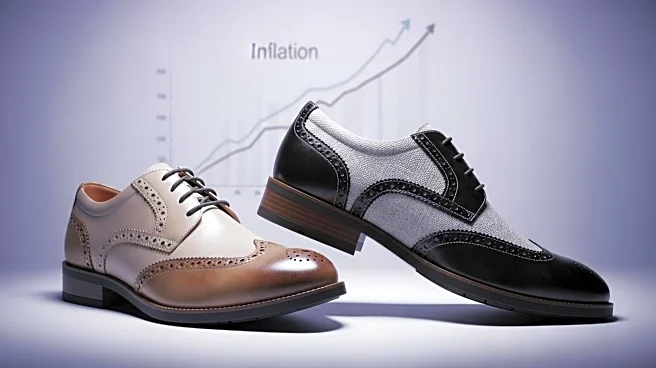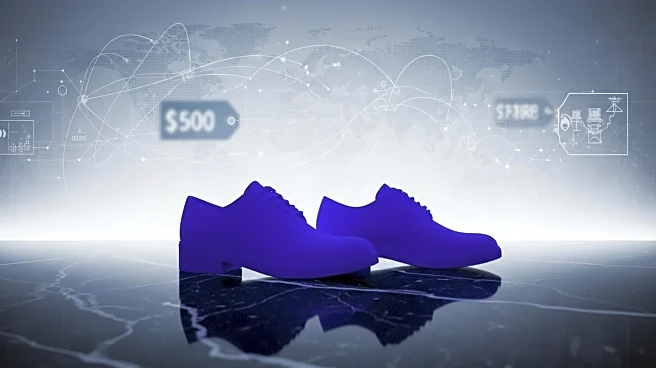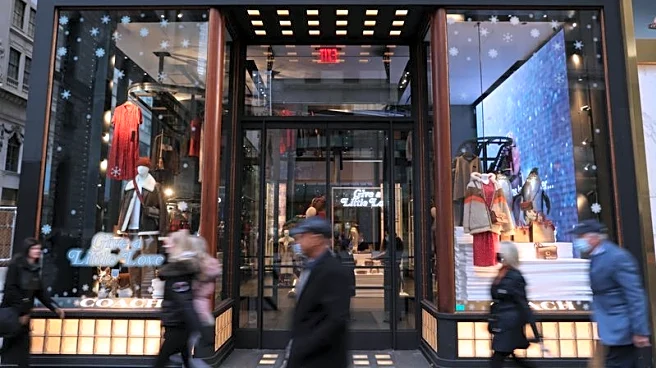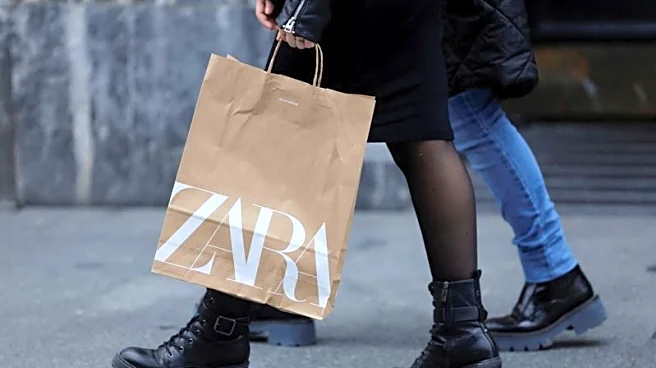What's Happening?
Shoe prices in the United States have seen a significant increase in August, driven by inflation and tariffs, according to the Footwear Distributors and Retailers of America (FDRA). Retail prices for footwear climbed 1.4 percent, marking the highest increase in 17 months. Women's shoe prices rose by 2.8 percent, while children's shoes increased by 0.9 percent. Men's shoe prices slightly decreased by 0.2 percent but have generally been on the rise over the past 19 months. Gary Raines, FDRA's chief economist, highlighted that tariffs are a major factor affecting the footwear market, with duties on imports soaring by 108.7 percent year-over-year. This trend suggests that retail footwear prices may continue to rise. Nate Herman from the American Apparel & Footwear Association expressed concerns about the impact of high tariff rates on prices, especially as the holiday season approaches.
Why It's Important?
The increase in shoe prices due to tariffs and inflation has significant implications for American consumers and the retail industry. Higher footwear costs can strain household budgets, particularly affecting families during back-to-school and holiday shopping seasons. Retailers may face challenges in maintaining sales volumes as consumers adjust to higher prices. The situation underscores the broader impact of trade policies on consumer goods, highlighting the need for strategic trade agreements that mitigate double taxation and prevent price spikes. The ongoing inflationary pressures also reflect broader economic trends that could influence consumer spending and economic growth.
What's Next?
As the holiday season approaches, stakeholders in the footwear industry are closely monitoring pricing trends. Retailers may need to adjust their strategies to accommodate potential further price increases. Policymakers might consider revisiting tariff structures to alleviate the financial burden on consumers and businesses. The industry could also explore alternative sourcing strategies to mitigate the impact of tariffs. Consumer advocacy groups may push for transparency in pricing and advocate for policies that protect consumers from excessive price hikes.












